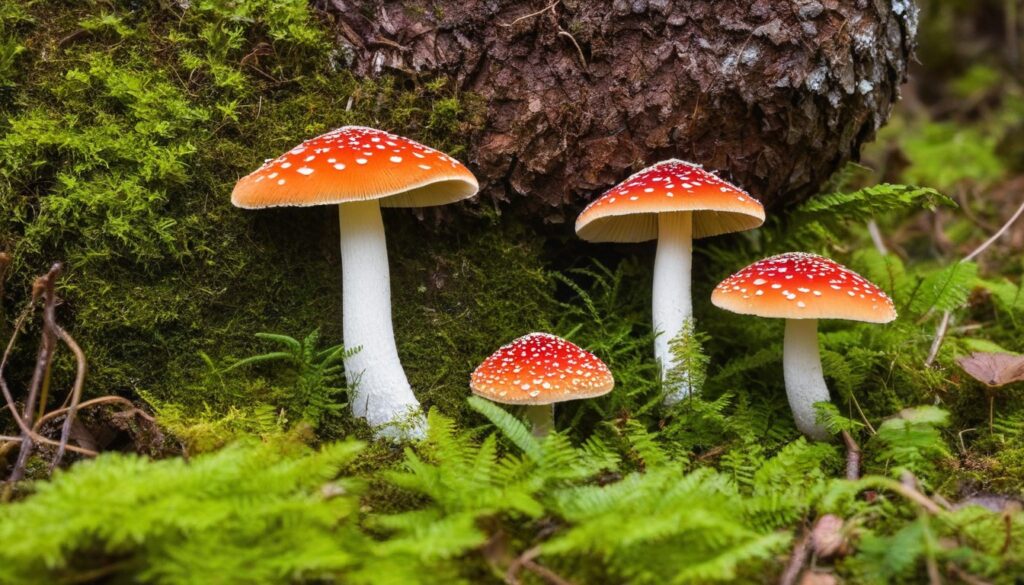Welcome to our comprehensive guide on the world of edible mushrooms in Texas! Whether you’re an experienced forager or a curious beginner, this guide is designed to provide you with the knowledge and confidence to identify and enjoy the delicious mushrooms that Texas has to offer.
With a diverse ecosystem that is home to numerous varieties of edible mushrooms, exploring the forests, fields, and woodlands of the Lone Star State can be a rewarding experience, allowing you to connect with nature while discovering unique flavors and culinary delights.
Key Takeaways:
- Learn about the diverse ecosystem that is home to numerous varieties of edible mushrooms in Texas
- Discover essential tips for identifying edible mushrooms safely and accurately
- Understand the seasonal patterns and habitats of mushrooms in Texas for successful foraging
- Explore the different culinary uses, cooking techniques, and mouth-watering recipes that showcase the unique taste and textures of Texas mushrooms
- Learn about the nutritional value, medicinal properties, and overall wellness advantages of incorporating edible mushrooms into your diet
Why Forage for Edible Mushrooms in Texas?
If you’re looking for a unique outdoor adventure in Texas, foraging for edible mushrooms is an experience like no other. Texas is home to a diverse ecosystem of delicious mushroom varieties waiting to be discovered in its vast forests, fields, and woodlands. Not only will you be able to connect with nature in a meaningful way, but you’ll also have the opportunity to sample unique flavors and culinary delights that are hard to find anywhere else.
Foraging for edible mushrooms in Texas offers a perfect way to satisfy your curiosity and sense of adventure while bringing home a bounty of natural treasures to share with family and friends. Whether you’re an experienced forager or just starting, taking the time to explore the mushroom-rich regions of Texas will be a rewarding experience that you won’t forget anytime soon.
So, grab your hiking boots, bring a basket, and embark on a foraging journey to discover the flavors and wonders of Texas mushrooms.
Safety First: Identifying Edible Mushrooms
Foraging for mushrooms can be a thrilling experience, but the key to a successful mushroom hunt is learning to identify edible varieties accurately. While foraging, one must be vigilant about distinguishing between poisonous and delicious mushrooms. Eating the wrong kind of mushroom can cause severe illness or even death.
To ensure that you can identify edible mushrooms, look for visual cues and know the telltale signs that a mushroom species could be harmful. Remember, some edible mushrooms look similar to poisonous ones, so be mindful of the nuances in their features.
Essential Tips for Identifying Edible Mushrooms
- Examine the cap, gills, and stem of the mushroom. Make note of its shape, texture, color, and any distinctive features it may possess.
- Check the underside of the mushroom cap. Do the gills or pores look the way they should?
- Smell the mushroom. A pleasant aroma is a good sign, but a foul smell could indicate that it’s past its prime or poisonous.
- Know your mushroom’s habitat. Some species grow mainly on trees, while others grow in clusters on the ground.
By sharpening your understanding of mushroom identification, you can safely forage for edible mushrooms in Texas’s woodlands and forests, discovering unique flavors while safeguarding your health.
Precautions for Mushroom Foragers
For safety, it’s crucial to stick to a few general precautions while foraging for mushrooms.
- Never consume raw mushrooms. Always cook them thoroughly to remove any toxins that may have crept in.
- Stay hydrated while you’re foraging. It’s vital to bring bottled water or a filter to guarantee you stay hydrated during your excursion.
- Bring a basket instead of a plastic bag to store your mushrooms. It allows for better ventilation and circulation, preventing them from drying out.
Awareness, attention to detail, and proper preparation are the keys to safe and successful mushroom foraging. Happy hunting!
Texas Mushroom Seasons and Habitats
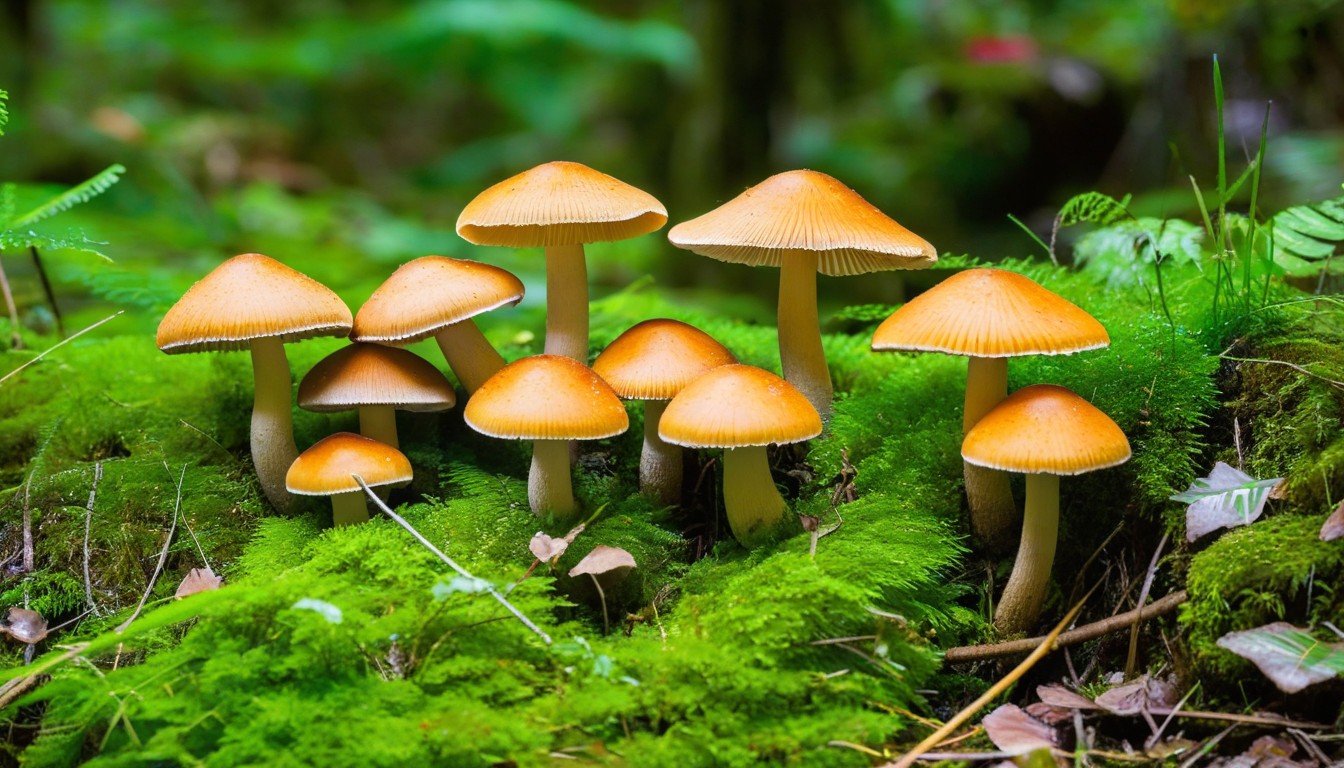
Foraging for mushrooms in Texas requires an understanding of the state’s diverse climate and geography. The optimal seasons for mushroom hunting vary depending on the region and weather conditions, so it’s essential to plan your foraging expedition accordingly.
|
Region |
Season |
Common Species |
|---|---|---|
|
East Texas |
Spring to fall |
Morel, Chanterelle, Chicken of the Woods, Puffball |
|
Central Texas |
Summer to fall |
Oyster, Chanterelle, Shaggy Mane, Chicken of the Woods |
|
North Texas |
Summer to fall |
Oyster, Chanterelle, Hen-of-the-Woods, Wine Cap |
|
West Texas |
Spring to fall |
Morel, Chanterelle, Boletus, Lobster |
When heading out for a foraging expedition in Texas, look for specific habitats for the different types of mushrooms you’re after.
- Morels are found near rivers, under cottonwoods, sycamores, elms, and mayapples.
- Chanterelles prefer shaded areas under oaks, elms, or conifers.
- Oysters grow on dead wood, particularly cottonwood, elm, and oak.
- Chicken of the Woods are found at the base of oak trees.
Keep in mind that mushroom habitats can also vary based on environmental conditions, such as recent rainfall and temperature. Always do your research and observe your surroundings carefully when searching for edible mushrooms in Texas.
Top Edible Mushrooms Found in Texas
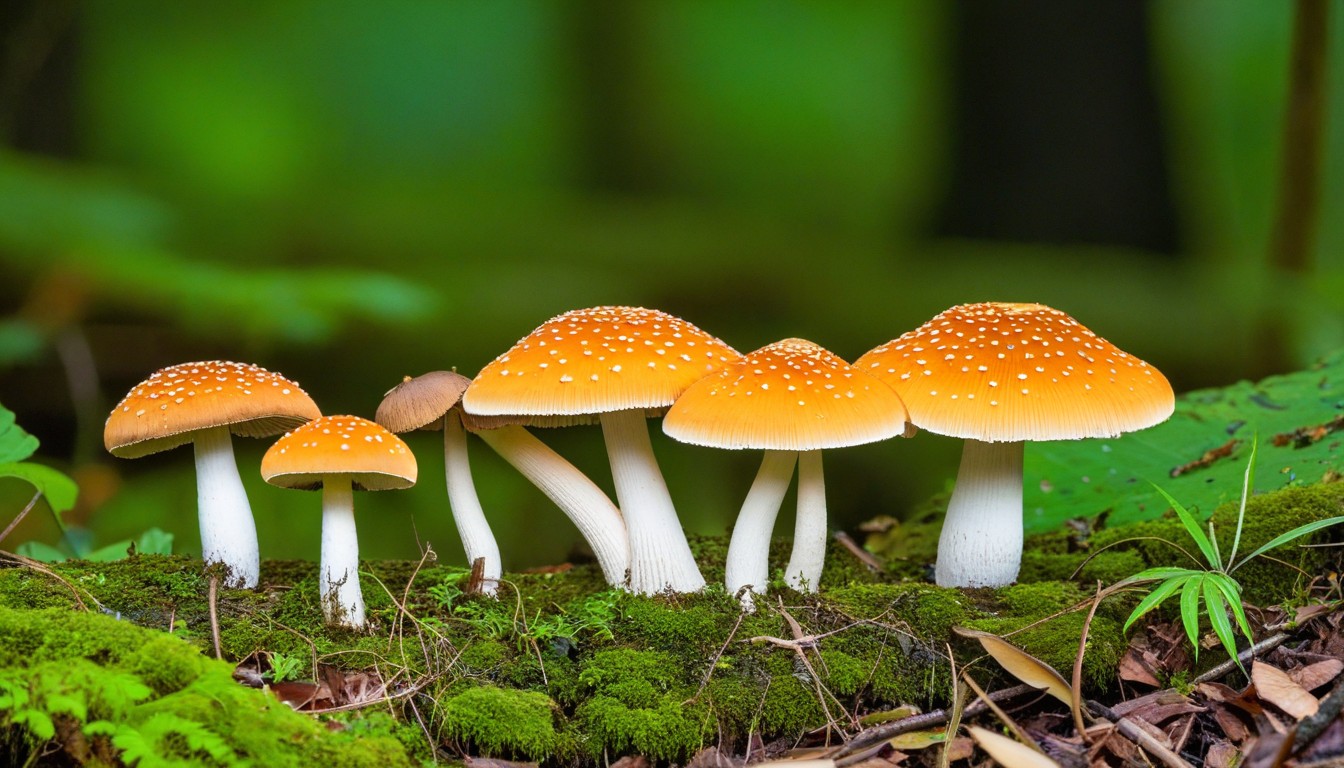
For foragers in Texas, a world of edible mushrooms awaits. Here are some of the most popular and delicious varieties worth seeking out:
|
Mushroom |
Seasons in Texas |
Flavor Profile |
Culinary Uses |
|---|---|---|---|
|
Morels |
Spring |
Nutty and meaty |
Grilled, sautéed, soups, and stews |
|
Chanterelles |
Summer and Fall |
Earthy and delicate |
Butter sautéed, pasta, risotto, and sauces |
|
Year-round |
Meaty and savory |
Battered and fried, stir-fries, salads, and sautéed with garlic and butter | |
|
Fall and Winter |
Rich and earthy |
Grilled, roasted, soups, and pasta sauces | |
|
Year-round with peak in summer and fall |
Seafood-like flavor and texture |
Sautéed, tempura-fried, cooked with butter and garlic, and used as meat substitute |
These top edible mushrooms are a great starting point for any forager in Texas, but don’t overlook the countless other varieties hiding in the state’s forests, fields, and woodlands. With proper identification and respect for the ecosystem, you can indulge in the unique and delicious flavors that Texas has to offer.
Where to Forage in Texas: Locations and Tips
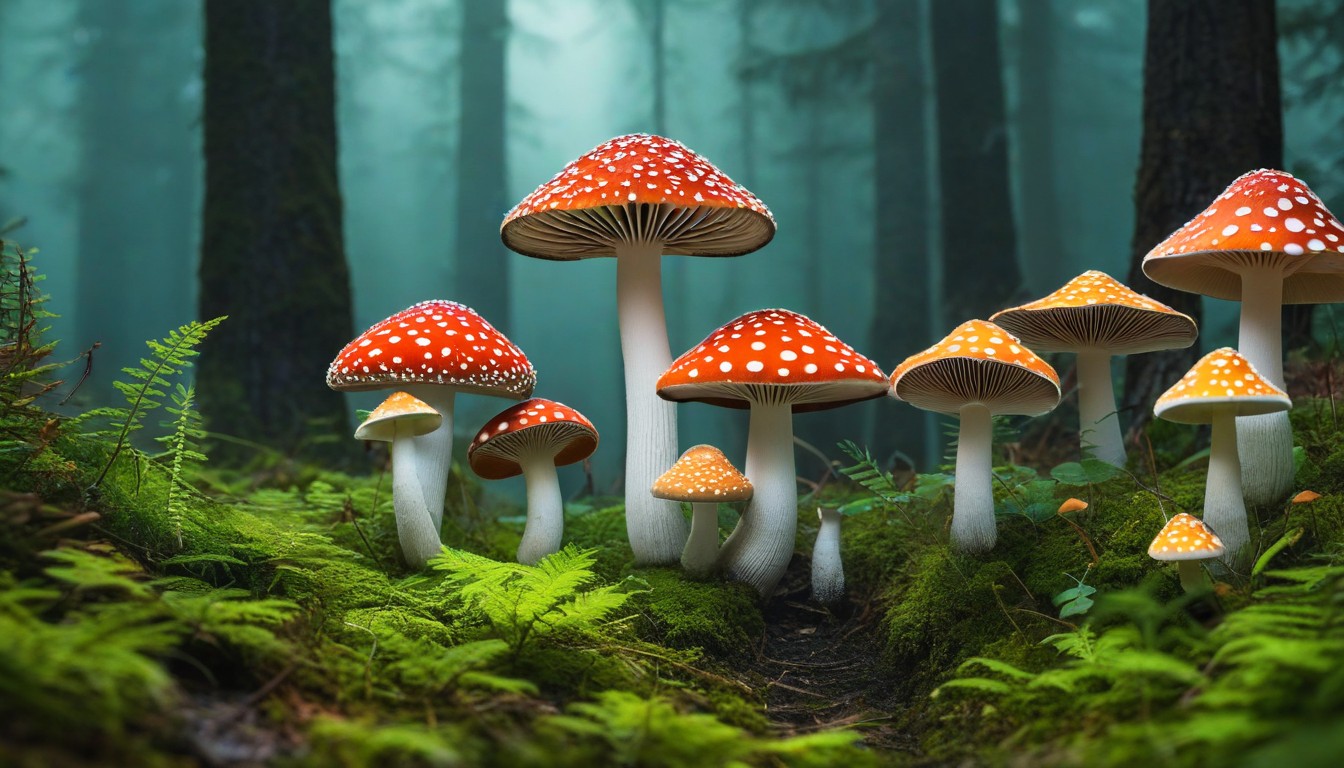
When it comes to foraging for mushrooms in Texas, there are several locations that should be on every forager’s radar. Here are some of the best places to find mushrooms in the state:
|
Location |
Mushroom Species |
|---|---|
|
Sam Houston National Forest |
Chanterelles, Morels, Chicken of the Woods, Boletes |
|
Big Thicket National Preserve |
Chanterelles, Morels, Oyster Mushrooms, Hen of the Woods |
|
Enchanted Rock State Natural Area |
Morels, Chanterelles, Hedgehog Mushrooms |
|
Brazos Bend State Park |
Hen of the Woods, Oyster Mushrooms, Hedgehog Mushrooms |
While Texas is home to a diverse range of mushrooms, it’s essential to approach foraging with caution. Always bring a field guide or expert, and never consume any mushroom unless you’re 100% certain of its identification.
Here are some tips to help you make the most of your mushroom foraging experience:
- Start small. Don’t try to identify every mushroom you come across. Instead, focus on a few species that you’re confident in identifying.
- Bring the right gear. This includes a basket or bag to carry your mushrooms, a knife for harvesting, and gloves to protect your hands.
- Respect the environment. Don’t trample on vegetation or disturb wildlife, and never remove more than 20-30% of any mushroom patch.
- Join a community. There are many resources available online and in-person to help you learn more about mushroom foraging. Joining a club or attending a foraging event can be a great way to learn from experienced foragers and meet like-minded individuals.
By exploring the natural habitats of Texas, using proper techniques and gear, and respecting the environment, you can make the most out of your mushroom foraging experience. Happy hunting!
Culinary Delights: Creative Uses and Recipes for Edible Texas Mushrooms
Once you’ve gathered your bountiful harvest of exotic mushrooms, the fun begins – experimenting with various culinary uses and sampling different recipes, unlocking the delicious flavors of Texas mushrooms.
Culinary Uses
Edible Texas mushrooms are versatile and can be used in a variety of dishes, adding unique flavors and textures to your meals. Here are a few culinary uses to try:
- Slice and sauté your mushrooms with garlic and butter to serve as a tasty side dish.
- Add finely chopped mushrooms to ground meat for a flavorful burger or meatloaf.
- Chop up your mushrooms and add them to soups, stews, or stir-fries for extra depth of flavor.
- Stuff portobello mushrooms with your favorite fillings and bake them for a satisfying vegetarian meal.
Recipes
|
Recipe Name |
Description |
|---|---|
|
Texas Mushroom Risotto |
A cheesy and creamy risotto packed with the earthy flavors of Texas mushrooms. |
|
Grilled Portobello Mushroom Steaks |
Thick, meaty portobello mushroom caps marinated and grilled to perfection. |
|
Mushroom Pecan Pâté |
A smooth and nutty spread made from mushrooms, pecans, and cream cheese. |
|
Mushroom and Spinach Quiche |
A savory egg custard loaded with mushrooms and spinach and baked in a buttery crust. |
Tip: For an even more intense mushroom flavor, try drying your mushrooms in a low-temperature oven or dehydrator before using them in your recipes.
With so many culinary uses and recipes to explore, edible Texas mushrooms are a delicious and healthy addition to any kitchen. Enjoy your foraged treasures!
Health Benefits of Edible Mushrooms
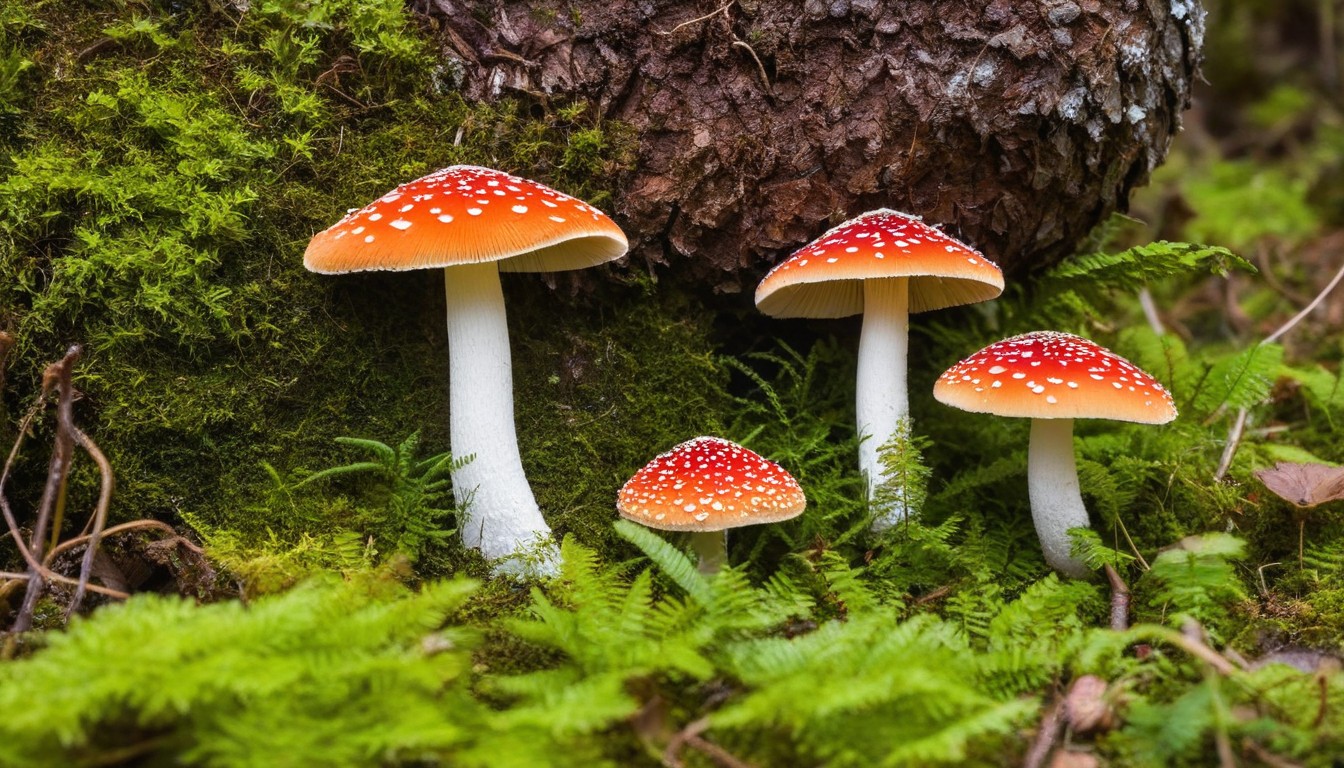
Aside from their delectable taste, incorporating edible mushrooms into your diet offers numerous health benefits. These fungi are low in carbohydrates and calories, making them an ideal addition to a weight-loss diet.
Edible mushrooms are also rich in vitamins and minerals, including vitamin D (which supports bone health and reduces the risk of certain cancers), potassium (which aids in heart function), and selenium (which supports thyroid health and helps combat oxidative stress).
In addition to these nutrients, some mushroom species are known for their medicinal properties. For instance, Lion’s Mane mushrooms are believed to improve cognitive function, while reishi mushrooms are touted for their immune-boosting benefits.
The health benefits of edible mushrooms are numerous and varied. By adding them to your meals, you can support your overall well-being and enjoy their delicious flavors at the same time.
“Aside from their delectable taste, incorporating edible mushrooms into your diet offers numerous health benefits.”
Conservation and Sustainability in Mushroom Foraging
Foraging for edible mushrooms in Texas is a delightful experience that must come with responsibility. It’s crucial to observe sustainable foraging techniques and ethical considerations to preserve mushroom populations and ensure the delicate ecosystem they belong to is not disturbed.
Mushroom Foraging Best Practices
When foraging for edible mushrooms, always keep these best practices in mind:
- Only harvest mushrooms that you can positively identify as edible.
- Respect private property and obtain permission before foraging on someone’s land.
- Avoid over-harvesting; leave some mushrooms behind to allow for natural reproduction and a sustainable population.
- Leave the habitat as you found it and avoid damaging plants and other wildlife.
- Dispose of any waste properly.
Contributing to Conservation
You can also contribute to the conservation of edible mushrooms in Texas by:
- Joining or supporting organizations that promote conservation and sustainable foraging practices.
- Participating in citizen science initiatives that monitor and track mushroom populations.
- Encouraging others to learn about sustainable foraging and the importance of conservation.
- Advocating for the protection of habitats and mushroom populations.
Importance of Conservation and Sustainability
Conservation and sustainability practices are essential for ensuring that Texas’s rich mushroom diversity remains preserved for future generations to enjoy. Aside from environmental reasons, mushroom foraging also has cultural and economic significance, making it all the more crucial to keep mushroom populations healthy and sustainable.
Cultivating Edible Mushrooms in Texas
For those who wish to have a consistent supply of edible mushrooms, cultivating them may be the best option. Fortunately, Texas offers the perfect environment for growing a variety of mushrooms. Whether you have a small area indoors or a large space outdoors, you’ll be able to cultivate mushrooms that are not only delicious but also packed with health benefits.
Indoor Mushroom Cultivation
Indoor mushroom cultivation is a great option for those with limited space, time, or resources. It’s relatively easy and requires minimal equipment and maintenance. All you need is a space that’s clean, dark, and humid, such as a closet or spare room. Mushroom kits are available online and in gardening stores, and they come with pre-inoculated spores and substrate that’s ready to grow.
For Texas-specific mushroom species, the white button and cremini mushrooms are perfect for indoor cultivation. These mushrooms grow best in temperatures between 55-65°F and prefer a little bit of humidity, around 75%. They also thrive in a substrate of composted horse manure and vermiculite.
Outdoor Mushroom Cultivation
Outdoor cultivation might sound intimidating, but it’s a great option once you have a bit of experience. It offers the possibility of higher yields and more diverse species of mushrooms, fresh air, and outdoor leisure. The best time to start growing mushrooms outdoors is from late spring to early summer, depending on the species.
For outdoor cultivation, you’ll need a patch of soil, some decomposing materials (such as rotting logs or straw), and mushroom spores or spawn. The essence of outdoor mushroom cultivation is mimicking the natural growing conditions in Texas. Outdoor species that grow well in Texas include the shiitake, oyster, and morel mushrooms.
Cultivating Methods
There are several cultivation methods to choose from when growing edible mushrooms in Texas. The most popular methods are bag, log, and block cultivation.
Bag cultivation involves inoculating sterilized bags filled with a substrate of nutrients and mushroom spawn. At the proper temperature and humidity levels, mushrooms will grow out of small holes in the bags and can be easily harvested.
Log cultivation involves drilling holes in logs and inserting mushroom spores in them. With a bit of patience, moisture, and time, mushrooms will grow out of the logs and can be harvested accordingly.
The block cultivation method involves preparing a substrate of ingredients and mushroom spawn, shaping them into blocks, and then incubating them until they’re fully colonized. Mushrooms will then grow out of the blocks representing a unique, effortless mushroom growing experience.
Conclusion
Foraging for edible mushrooms in Texas can be an exhilarating experience, allowing you to connect with nature and discover delectable culinary treasures. With this comprehensive guide, you now have the knowledge and confidence to safely identify edible mushrooms and understand their habitats and seasons.
Remember to always prioritize safety and conservation when foraging, and to respect the natural habitats that these mushrooms call home. Whether you’re looking to add unique flavors to your dishes or incorporate healthy and nutritious foods into your diet, edible mushrooms in Texas offer a world of possibilities.
So grab your gear and head out to the forests, fields or private lands and embark on your own mushroom foraging adventure. With the tips and tricks shared in this guide, you’re sure to discover some of the most delicious and sought-after edible mushrooms in Texas. Happy foraging!
FAQ
Why should I forage for edible mushrooms in Texas?
Foraging for edible mushrooms in Texas allows you to explore the diverse ecosystem of the state and discover unique flavors and culinary delights.
How can I safely identify edible mushrooms?
Before mushroom foraging, it’s crucial to learn how to accurately identify edible mushrooms using visual cues and precautions for your safety.
What are the optimal times and habitats for mushroom foraging in Texas?
Understanding the seasonal patterns and habitats of mushrooms in Texas is crucial for successful foraging, taking into account specific environmental factors.
Which are the top edible mushrooms found in Texas?
Texas is home to a range of sought-after edible mushrooms, including morels, chanterelles, and oyster mushrooms.
Where are the best locations for mushroom foraging in Texas?
Discover the best locations for mushroom foraging in Texas, including state parks, national forests, and private lands, with insider tips to navigate these areas respectfully.
What are the culinary uses and recipes for edible Texas mushrooms?
Explore various culinary uses, cooking techniques, and mouth-watering recipes that showcase the unique flavors of Texas mushrooms.
What are the health benefits of edible mushrooms?
Edible mushrooms offer not only delicious flavors but also nutritional value and medicinal properties, contributing to overall wellness.
How can I practice conservation and sustainability in mushroom foraging?
Learn about responsible foraging practices, ethical considerations, and ways to contribute to the conservation of edible mushrooms in Texas.
Can I cultivate edible mushrooms in Texas?
Yes, Texas provides an ideal environment for cultivating edible mushrooms, with various indoor and outdoor cultivation methods to explore.

